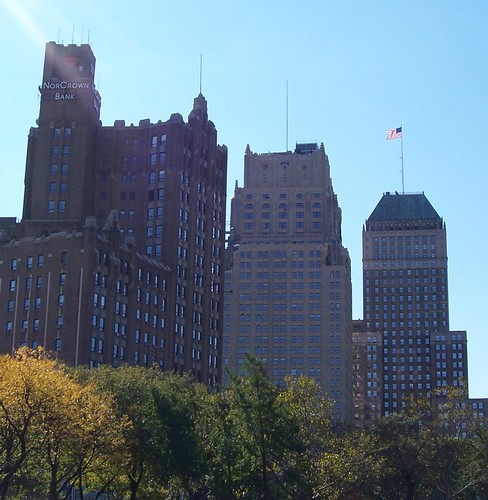REGIONAL PLAN ASSOCIATION
The Larger Context for Sustainability: Good Town Planning and Climate Change
The most widely accepted definition of “sustainability” comes from the United Nations’ Brundtland Commission 1987 report “Our Common Future.” They define sustainable development as “… development that meets the needs of the present without compromising the ability of future generations to meet their own needs.”
This is obviously an extremely broad concept – at some level, it touches on everything relating to land-use and planning. For the purposes of this study, and in order to focus and define this initiative in a way that can be most useful to the City of Newark, sustainability is addressed according to several specific categories which recur in the research, literature and practice of sustainability and defined generally in the following terms:
Waste Management: The practices of collection, disposal and recycling of organic and non-organic waste and the citizen’s participation in the relation of communities to the byproducts of their activities and their impacts.
Water Resources: Measures for provision, conservation and use of water resources in landscape installation and maintenance, reclamation and harvesting including clean water, storm water and wastewater and gray water management.
Housing Design and Construction: Standards for residential building practices that aim to create energy efficient structures and make the optimal use of resources and have the least ecological impact.
Energy: Strategies for conservation and efficient use of resources to operate the needed systems for community life that can affect landscape impact on temperatures and other climate issues from buildings to the regions.
Green Business and Economy: Business practices that embed environmental principles in economic development, such as strategies for green business attraction and retention and green workforce jobs initiatives.
Transportation and Connectivity: Policies and plans to reduce auto-dependency and improve mobility and promote transit-oriented development, car sharing, diverse modal transport and pedestrian friendly spaces.
Public Health and Local Food Production: Programs and policies that look to provide environments that promote healthy living by increasing pedestrian and other physical activity and that encourage access to quality food to reduce morbidity.
Habitat: Standards that promote the ecological diversity in any given area, such as a municipality or other political unit that is inhabited by a particular group of flora and fauna and other species that contribute to the environment.
…
Case: Energy
Boulder, CO – Smart Grid City
Sustainable energy refers to the conservation and efficient use of energy and to systems, which provide power or work to cool or heat the landscape from a building to a region. This relates also to waste management, since a truly sustainable city will tap into its waste resources for energy.
Boulder Colorado, a city with a population of 91,685 (2006), has implemented the first large-scale pilot project installing Smart-Meters on approximately 10,000 homes in the first phase alone for a total of nearly 20,000 homes as of March 2010.
This intelligent meter is one component of a broad information network, which connects suppliers or providers, and consumers through Broadband over Powerline (BPL) technology. BPL uses existing electrical wires to provide digital communications capabilities and create a multi-directional, high-speed communication network. The Grid further allows the provider (in Boulder’s case Xcel Energy) to monitor the energy consumption of individual houses in real time and to check it against the larger, more complex distribution system, and to adjust for optimization.
Smart Meters result in a variable pricing system. Consumers can see how much power is being used in 15 minute increments, and adapt their use to consumption and load across the larger interconnected smart grid. Electricity is most expensive when demand is greatest, and cheaper, for example, late at night, when the loads are lower. The overall impact is energy conservation and carbon emissions reductions.
…
About Regional Plan Association
www.rpa.org
Regional Plan Association is America’s oldest and most distinguished independent urban research and advocacy group. Now in its 86th year, RPA prepares long range plans and policies to guide the growth and development of the New York- New Jersey-Connecticut metropolitan region. RPA also provides leadership on national infrastructure, sustainability, and competitiveness concerns. RPA enjoys broad support from the region’s and nation’s business, philanthropic, civic, and planning communities.
Tags: Boulder, CO, colorado, New Jersey, Newark, NJ, Regional Plan Association, RPA







 RSS Feed
RSS Feed